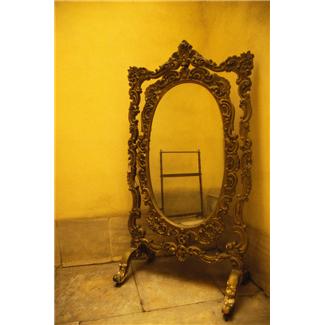- Calls to this hotline are currently being directed to Within Health or Eating Disorder Solutions
- Representatives are standing by 24/7 to help answer your questions
- All calls are confidential and HIPAA compliant
- There is no obligation or cost to call
- Eating Disorder Hope does not receive any commissions or fees dependent upon which provider you select
- Additional treatment providers are located on our directory or samhsa.gov
Driven to Perfection: The Evolution of Body Image

For a culture that is increasingly preoccupied with body image, size and shape, it is a curious thing to reflect on how a standard of beauty has evolved. Looking back in history, it is clear that many aspects of beauty that were once idolized are considered shameful, or daresay, unacceptable. What are the forces behind the conceptualization of the “ideal” woman, the woman whose existence is merely an airbrushed, photoshopped, unrealistic image passed as perfection?
Looking back through the centuries, it is easy to identify how the trends of beauty have changed and evolved. History has a way of repeating itself, with trends recycling through the decades. In the Victorian Era and in the 1950’s, full-figured, curvaceous women like Marilyn Monroe, set the standard for beauty for women. Fast forward a couple decades, and this image was altered dramatically, with an increased emphasis on thinness and weight loss and added pressure to reveal a “toned” look. Presently, our society operates on a superficiality theme: “Thin is in”. This includes use of procedures and operations that can artificially “create” the desired look toted by celebrities and models, lessening the appearance of what was once considered beauteous, attractive, and exquisite.
Dr. Sherry Pagoto, licensed clinical psychologist, discussed this changing view of the “perfect” woman, stating: “Our image of the perfect body-very size driven-does not align well with what is a healthy body-more habit driven-one that is active, eats healthy and keeps risk factors at bay. We have become very hung up on size and I think research suggests that it’s just more complicated than that [1].”
This evolution of body image, particularly as it is portrayed and promoted through the media, can be damaging for men and women susceptible to developing an eating disorder. The American Psychological Association has argued that exposure to thin ideals in the media are a considerable contributor to body dissatisfaction and eating disorders [2].”
Thanks to an increasing awareness and advocacy for eating disorders, a battle for real beauty is being fought. This is slowly unfolding throughout the media, with trends cautiously turning toward naturality, supporting beauty in its purest forms – found in the uniqueness and distinctiveness of individuals rather than a paper doll cut-out. Many social changes are driving towards a new standard of beauty, such as the newest Israeli BMI requirement for models, or movements like ‘Health at Every Size’, which promotes finding peace with and honoring our bodies.
If you or a loved one is suffering with an eating disorder, it may be confusing to learn how to accept your body in comparison to the unrealistic standards held hostage by mainstream media. Continue to surround yourselves with those who attest to your beauty and love you as you are! Looking for a way to become involved in the promotion of real beauty? Consider joining the Eating Disorder Hope Pro-Recovery Movement as a way promoting online health, hope, and healing among eating disorder sufferers. Remember that beauty is not a standard to achieve, but rather, a accumulation of life experiences, relationships, values, memories, joyful hope, and more. Perhaps in focusing on these things, can we truly emanate real beauty.
References:
[1]: Pagoto talks body image on NECN http://www.umassmed.edu/news/2013/research/pagoto-talks-body-image-on-necn
on the sexualization of girls. Retrieved January 15, 2013 from
http://www.apa.org/pi/wpo/sexualization_report_summary.pdf
